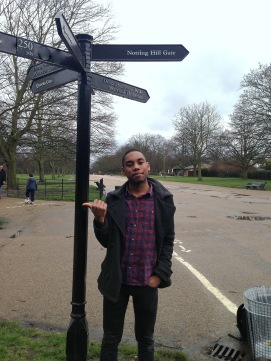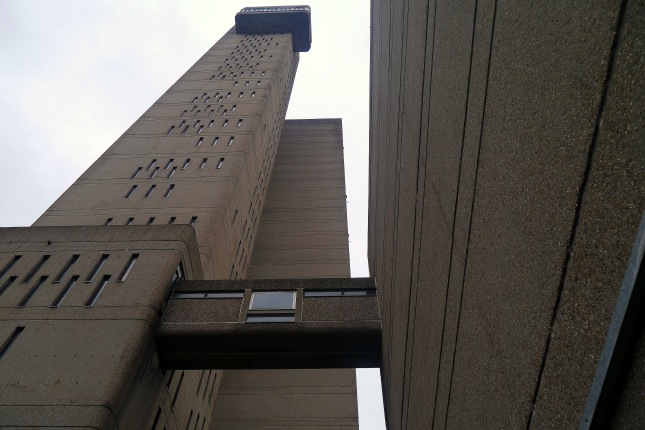 A common question I get asked (by myself), is where is Notting Hill? Before you shrug off that question by pointing to where it reads Notting Hill on the map, I would respectively ask you to delay that instinctual response. The history of the locality ‘Notting Hill’ is – fortunately for this post – long and slutty.*
A common question I get asked (by myself), is where is Notting Hill? Before you shrug off that question by pointing to where it reads Notting Hill on the map, I would respectively ask you to delay that instinctual response. The history of the locality ‘Notting Hill’ is – fortunately for this post – long and slutty.*
So to aid our light-hearted and totally inaccurate adventure in defining where Noting Hill is, below I’ve provided some reference points. I’ve also added a rather lovely map to guide you at the bottom. Enjoy and share, fact fans!
Notting Hill
Where else could we start, but with Richard Curtis’ rom-com-nom? This 1999 admittedly dreadful film stars what’s-her-face from airbrushed billboards and what’s-his-name from Sliding Doors (he wasn’t in that? Then who stole his credit as “bumbling English gent”!).
Unfortunately, so successful were the marketing and desirability of its cast at the time, this whimsical car crash of a film has managed to shape almost every perception of Notting Hill for anyone who doesn’t live there. So despite my doubts, it shall be taken as the first and foremost geographical reference. For, if Richard Curtis is capable of making a film as dull as dishwater as Notting Hill, you would suspect he is perfectly suited to the similarly grey world of town planning.
 The film is set around Portobello Market, with Hugh’s ‘quirky’ blue door situated on Westbourne Park Road. Refer to the embedded map.
The film is set around Portobello Market, with Hugh’s ‘quirky’ blue door situated on Westbourne Park Road. Refer to the embedded map.
Carnival
The world’s second largest carnival wouldn’t be accused of misleading the public – think of the potential controversy! Therefore, I’ve added it as the second reference point to forming our analysis.
Also the 2012 route passed where I lived, so this further legitimises my claim of actually living in Notting Hill at one point.
The Notting Hill Set
What’s-his-face from airbrushed billboards, can count his leadership of the Conservatives as a direct result of the ‘Notting Hill Set’. So-called because they lived in Notting Hill – this must be a surefire way of defining where the bloody hell this town is! For, to the best of my knowledge, the media has never misrepresented facts before.
Trellick Tower
Trellick Tower is within Notting Hill because I said it was in a previous post. This is tyranny. Deal with it.
Grand Union Canal
The canal is a rather nice thing that threads through West Central London on its way up to Birmingham. Nice things belong in Notting Hill. Therefore, the Grand Union Canal can be the proud owner of an ‘I Used To Live In Notting Hill’ Plaque. Congratulations.
Notting Hill Gate
Just to be controversial, I will say that Notting Hill Gate is the product of leeches attempting to trade on the Notting Hill “brand”. Originally, it wouldn’t be seen as part of the area, but seeing as it now possesses the name, and also the rather marvellous Gate cinema, I’ll allow it.
Postcodes
I won’t be mentioning postcodes here, as according to this source, I never even lived in Notting Hill; a fact I will attack as untrue and slanderous to my grave. Plus, postcodes just aren’t sexy – as this post undoubtedly exemplifies.
Conclusion
So your answer? Notting Hill is the buffer zone between Central and West London: keeping the peace between the wild west and crazy central. So now you know. The forever fascinating intricacies of town planning. Fin.
——————————————————————————————————————————————————————————————————————————–
* When I say ‘slutty’, I refer to the practice of using ‘Notting Hill’ in one too many instances. This is rather than me insinuating that the area is synonymous with certain ladies of the night. For that, find a blog about King’s Cross or Newcastle**. ** I apologise to the fine home of Geordie Shore. I retract what I said wholly and humorously.
 Over the course of last year, whilst living in Notting Hill, I noticed a sharp increase in my chip intake. This was mainly the result of my lifestyle. Most evenings I wouldn’t make it back to the house until 9, and by then had no desire to cook. The chippie at the end of the street always seemed like a good option.
Over the course of last year, whilst living in Notting Hill, I noticed a sharp increase in my chip intake. This was mainly the result of my lifestyle. Most evenings I wouldn’t make it back to the house until 9, and by then had no desire to cook. The chippie at the end of the street always seemed like a good option. A common question I get asked (by myself), is where is Notting Hill? Before you shrug off that question by pointing to where it reads Notting Hill on the map, I would respectively ask you to delay that instinctual response. The history of the locality ‘Notting Hill’ is – fortunately for this post – long and slutty.*
A common question I get asked (by myself), is where is Notting Hill? Before you shrug off that question by pointing to where it reads Notting Hill on the map, I would respectively ask you to delay that instinctual response. The history of the locality ‘Notting Hill’ is – fortunately for this post – long and slutty.* The film is set around Portobello Market, with Hugh’s ‘quirky’ blue door situated on Westbourne Park Road. Refer to the embedded map.
The film is set around Portobello Market, with Hugh’s ‘quirky’ blue door situated on Westbourne Park Road. Refer to the embedded map.
